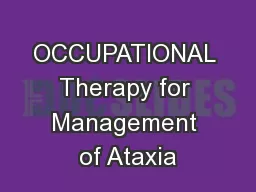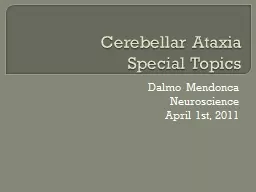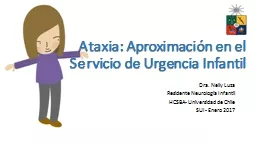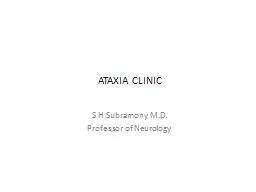PPT-Strategies for Living with Ataxia
Author : murphy | Published Date : 2022-02-16
Bailey Vernon MPH CHES Johns Hopkins Ataxia Center Disclaimer The information provided by speakers in any presentation made as part of the 2015 NAF Annual Membership
Presentation Embed Code
Download Presentation
Download Presentation The PPT/PDF document "Strategies for Living with Ataxia" is the property of its rightful owner. Permission is granted to download and print the materials on this website for personal, non-commercial use only, and to display it on your personal computer provided you do not modify the materials and that you retain all copyright notices contained in the materials. By downloading content from our website, you accept the terms of this agreement.
Strategies for Living with Ataxia: Transcript
Download Rules Of Document
"Strategies for Living with Ataxia"The content belongs to its owner. You may download and print it for personal use, without modification, and keep all copyright notices. By downloading, you agree to these terms.
Related Documents














